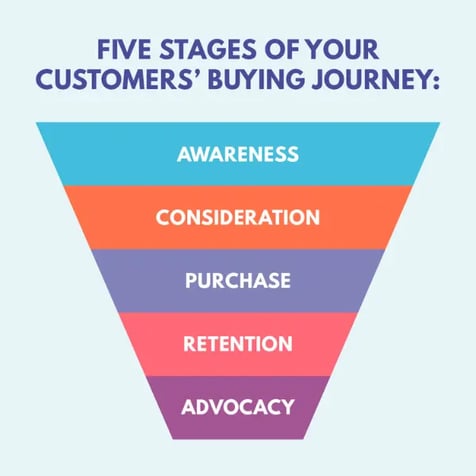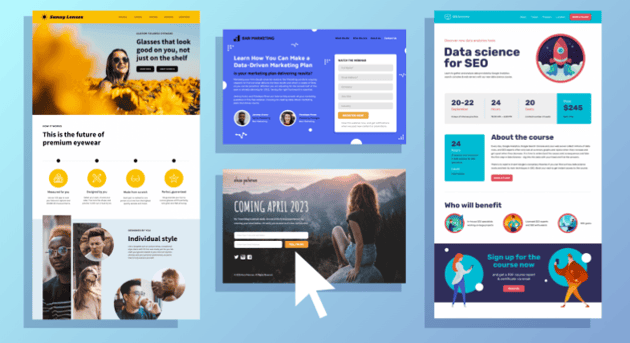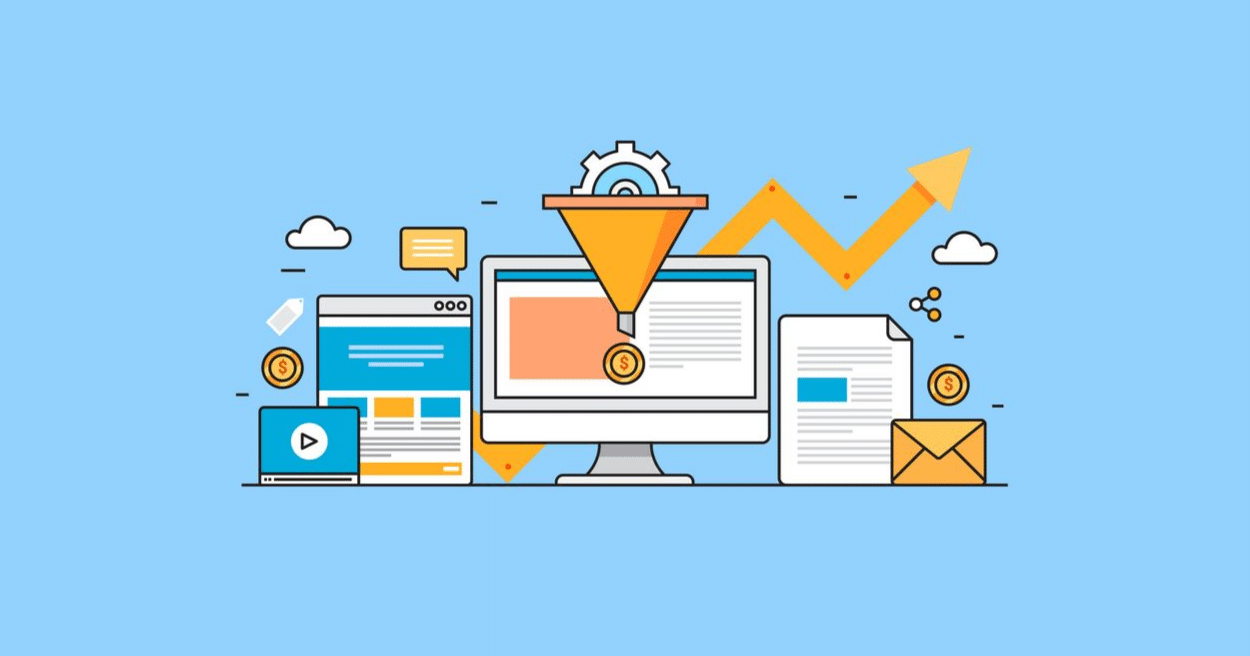How to Create a Shopify Sales Funnel: Steps, Tactics, And Mistakes To Avoid
If you have done so many things to boost the sales on your Shopify store, but the results are still not what you want. And if your visitors are not becoming paying customers. At this moment, you need to make some changes by focusing on the sales funnel design of your Shopify store.
Boosting your conversions and improving the revenue potential of your online business requires optimizing your Shopify sales funnel. The buying process, from awareness to completion, is transitioned through by your consumers, thanks to a well-optimized sales funnel. Now you can direct your customers toward making a purchase and raise your total conversion rates by carefully optimizing each phase of the funnel.
In this article, you will get to know more about the Shopify sales funnel, how to build it, the best tips and tricks to follow, and the mistakes to avoid. Read on.
Table of content
- What is Shopify Sales Funnel?
- How to Build Your Own Shopify Sales Funnel?
- Tips & Tactics to Build Your Own Shopify Sales Funnel
- 5 Mistakes to Avoid While Building Your Own Shopify Sales Funnel
What is a Shopify Sales Funnel?

A sales funnel is a sequence of multiple relationship-building activities that convert unknowing leads into paying clients and, later on, to loyal consumers. The "funnel" is a representation of the entire buying journey, with traffic coming from your target market and high-value clients exiting at the other end.
Hence, simply, a sales funnel can help you generate, capture, nurture, and convert consumers when an eCommerce website's average conversion rate is less than 3%.
The funnel begins as soon as your clients learn about your brand and runs until they buy a product and recommend it to others. Sales funnels consist of three parts:
- Top of funnel (ToFu) Awareness Stage: Your target audience that doesn’t know your brand yet to buy from you at the moment.
- Middle of funnel (MoFu) Consideration Stage: Potential customers who know your brand and are thinking about products or services like the ones you sell. They might consider buying from you.
- Bottom of funnel (BoFu) Action Stage: New or already existing customers who are about to buy from you with the right tactics and actions
5 Steps To Build Your Own Shopify Sales Funnel
For your Shopify store, creating a sales funnel can help you maximize conversions and boost sales. Below are some steps that can help you build your own Shopify sales funnel are as follows:
1- Know Your Audience
Determine your target audience before creating your sales funnel: It's critical to understand who your target market is. You may use this to make personalized offers and messaging that appeal to your target customers. Who your ideal client is, broken down by psychographics (such as beliefs, values, and drivers), demographics (like age, gender, and occupation), and behaviors. Know what the problem is with your audience. Who your rivals are and what they have to offer the similar demographic. What makes you stand out, specifically? How can you attract and entice customers who have other options to your brand?
2- Establish a Landing Page
A landing page is a separate page created with the goal of turning visitors into paying customers. Make sure your landing page features a form to gather information about your visitors. Make sure you have a very strong call-to-action, all the clear information about your products or services, and a clear and enticing headline. Don’t forget to create an emotional connection with your customers.
3- Design the Buying Journey of Your Consumers
 Image source: cim.co.uk
Image source: cim.co.uk
How may a customer's journey go from being a total stranger to supporting a brand? What and how might they use different channels?
Make a list of the things that the customers need to know, what they want to see, and how you can attract them. Then consider the kinds of marketing initiatives and activities that might be appropriate at each step of their buying journey. Consider how each suggestion should encourage the customer to take the next step as you draw inspiration from the ideas presented above.
For each marketing action, create your own KPIs (Key Performance Indicators) so you can track and measure your success.
4- Start selling your products & building relationship with your customers
Typically, only 2% of customers who visit an eCommerce business for the first time convert. However, it's simple to attract new visitors with the correct incentives. First-time customers are extremely valuable to online retailers. Create incentives for their initial visit so they feel special.
With a 10% discount, you may draw in more clients from your target market, keep them around, and possibly even persuade them to make a purchase. Receiving an immediate discount for your first purchase after visiting a website for the first time. That has a higher chance of producing a sale than not.
5- Measure, experiment, test, and repeat
You need to check in with your marketing efforts. What’s working for your brand, and what isn’t? What can you change or substitute or eliminate? What is trending, and what is outdated? What do your customers like and what they don’t? What did they engage with, and what boosted your sales the most?
Keep an eye out because things might change sooner than you think!
Practics & Tactics To Have a Successful Shopify Sales Funnel

You can use the following tactics and strategies to create a successful Shopify sales funnel:
1- Optimize your store's layout
Your store should be aesthetically pleasing and simple to use. Make sure your product pages include precise descriptions, prices, and call-to-actions, and use high-quality product photos. Make sure your online store layout design is responsive and mobile-friendly.
2- Have a product worth buying
You could have the best sales funnel strategy ever seen, and if your product isn’t worth it, no one will even be willing to take the journey. Don’t introduce tons of leads into a funnel without a product that people don’t want to buy.
3- Let people know that you exist
When it comes to a sales funnel, you should start by attracting clients to your store. You need smart advertising efforts that are catered to your particular niche if you want people to find your store on their own. Using SMS/email marketing, social media sites, other tactics, or other platforms that your target people are using will be a great idea to attract them to visit your store.
4- Show your products in the right way & offer them nice deals
Make sure that your customers spend time actually inspecting your products or services once they are inside your online store. Offering clients enticing discounts is one of the best ways to get them to look at your items. You may develop upselling deals and give your clients discounts when they buy numerous items. These kinds of offers can significantly boost the number of clients that visit your store and have a significant impact on their decision to buy
5- Hook your audience while they are in the consideration phase of the sales funnel
A good place to begin is by getting your clients to view an offer. However, unless a consumer adds items to their cart, you don't truly benefit from this. There are various ways to increase the amount of add-to-carts your store receives, and one of the best techniques is to use upselling specials and sales. To find out more about upselling and cross-selling in your Shopify business, look out PickyStory's deals.
According to research, package sales actually lead to higher customer spending because the perceived discount encourages additional purchases. To increase your ATCs, you may also make use of a clear call to action, good product photos, and an easy-to-navigate store.
6- Use retargeting ads
To entice visitors who have already left your store to return. Use retargeting advertisements from Facebook or Google to display ads to site visitors who have looked at your products or added items to their cart but haven't finished the transaction.
7- Be proactive with questions and concerns
Be your own best devil’s advocate. Think about all the possible concerns, questions, or obstacles that people may face when considering your product. Then, provide the answers as steps in the sales funnel that will help them continue on their journey without having to wait for you to get back to them
8- Stop selling and start a conversation
Everyone knows that you’re trying to sell products on Shopify. That’s obvious. Today’s customer doesn’t want to be “sold” anything—they want to be informed and given the assistance and tools they need to make an informed decision and move through the sales funnel accordingly. Focus your sales funnel on creating a dialogue with your potential customer. It will help them move through the journey with more confidence, feeling that they have a reputable source on their side along the way.
Now that you have a better understanding of how the sales funnel works and what it can do, let’s talk about some best practices and big mistakes that you’ll want to keep in mind.
9- Optimize & Measure your results
Utilize Shopify analytics to evaluate the effectiveness of your sales funnel. Over time, identify places where your funnel needs to be improved and make the necessary adjustments.
6 Mistakes to Avoid While Building Your Own Shopify Sales Funnel
You'll want to avoid a few typical errors in order to build a successful sales funnel. Here are some important points to consider:
1- Neglecting the Importance of a Strong Landing Page

Many online businesses only care about increasing website traffic, not the caliber of the landing page that site visitors will see.
High bounce rates and lost conversions can result from a poor landing page.
2- Not Using Non-responsive Designs
Your online shop must be mobile-friendly. One of the first errors that brand-new Shopify store owners will make is this one. I understand their perspective. The Shopify theme editor's desktop view is the default view, and editing your theme there is considerably easier to use. The theme of your Shopify site should be optimized for visitors using mobile devices.
3- Lack of Proper Audience Segmentation
An effective sales funnel depends on knowing your target market and correctly segmenting it.
Failure to do so may lead to a generic, one-size-fits-all strategy that underwhelms potential clients.
4- Not considering Data and analytics
Analytics and data on Shopify are effective tools for maximizing ROI and streamlining your sales funnel.
Lack of performance monitoring and analysis might result in missed opportunities and inefficiency.
5- Avoid Cluttered or Very Plain Online Store Designs
Taking your time when creating your online store is crucial. Don't rush it because customers will notice if you don't put much work into your store. Your online store will be the first impression for some of your customers! Make sure that they love it!
Avoid having cluttered designs or boring ones. You can easily check the latest and best Shopify designs and templates from here.
6- Not testing and improving constantly
A sales funnel is considered something that is dynamic, and what works today might not work tomorrow. To stay ahead of the competition and maximize your ROI, it's essential to continuously test and enhance your sales funnel. To know how you can make better decisions in the future.


